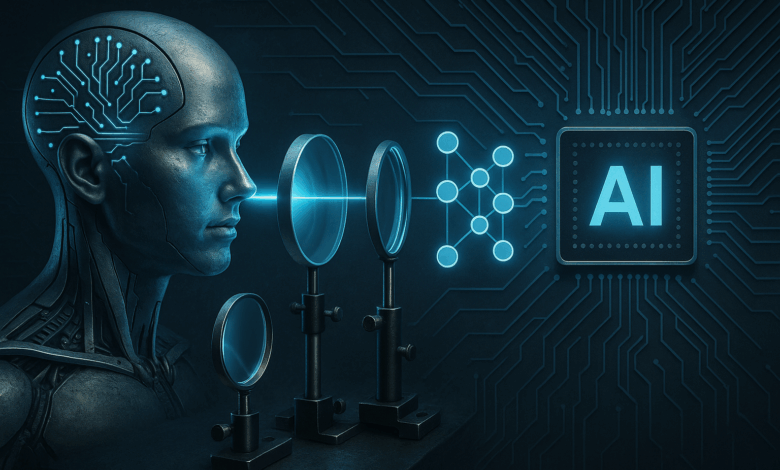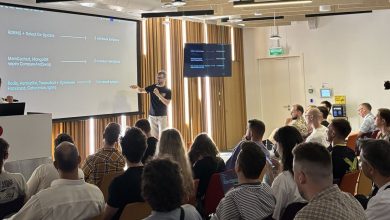
Rich Lepkowicz is SVP of Optical Engineering at Peak Nano, a U.S. leader in capacitor film and optics for energy and defense. An expert in optical design and gradient index (LGRIN) technologies, he has led advanced R&D programs and innovations in advanced imaging systems. Rich’s background includes research leadership at Rose-Hulman, along with strategic consulting for DARPA and ONR.
AI is set to revolutionize optical design, just as it is transforming countless other technical fields and professions. While optical designers are highly skilled in physics and mathematics, the core principles of optical design are well-established, making this domain especially suited for AI automation. The scarcity of expert optical designers, combined with growing demand in sectors like defense and energy, has made it imperative for companies to scale design capabilities rapidly.
PreAI Optical Design Bottlenecks
Traditionally, optical design is a manual, iterative process. Designers rely on platforms like CODE V and Zemax OpticStudio, searching through reference libraries, Google searches, old designs, patents, and textbooks to piece together new solutions. Each project requires translating broad requirements—field of view, lens count, size, F#, cost—into detailed specifications, then running countless simulations and optimizations, and iterating again until a workable prototype design is achieved. But each step is still manual, requires highly skilled people, and lacks automation to test a broader range of lenses, materials, and combinations thereof. This approach is slow, labor-intensive, and heavily dependent on a limited pool of experienced optical designers. The underlying approach and software, largely unchanged for decades and built before the GPU era, are now a bottleneck for innovation and scalability.
What Is Missing in the Optical Design Process?
At Peak Nano, we saw the limitations of existing optical design tools and developed our own platform, HawkAI, to address them. This has shortened the design timeline significantly—from six months with traditional tools like CodeV or Zemax down to six weeks in our internal programs. As the technology evolves, this timeframe will continue to shrink, potentially to days or even hours.
Across the optics industry, AI is enabling four key advances:
- Prompt-Based Design: Instead of searching for past solutions, designers interact with the AI to specify outcomes, letting the system generate novel designs from scratch.
- Expanded Options: AI can evaluate a wide range of materials, optical architectures, and surface types, utilizing mathematical models rather than relying on human memory or experience.
- Massive Iteration: Millions of design variations, such as adding or removing lenses and changing optical materials, can be tested, optimized, and validated at scale—far beyond what any human team could achieve.
- Broader Talent Pool: By automating complex tasks, AI lowers the barrier to producing novel, highly manufacturable optical systems.
The Post-AI Optical Design Workflow
The ability to scale optical design capabilities is vital for growth. AI isn’t just a commercial product; it’s a strategic internal tool that lets companies compete, scale, and deliver for their customers.
In industries with specialized market segments, such as defense, recruiting optical expertise globally can be challenging. As a result, AI has become a natural solution to extend engineering capabilities. While expert scientists continue to guide the development of advanced optics design platforms, AI now enables a broader and more diverse engineering workforce to deliver complex, customer-driven projects more quickly and efficiently. Similar to applications in law, medicine, and marketing, AI is increasingly becoming an essential tool in optical design.
- Speed: AI enables expedited design times, lower costs, and boosts competitiveness. The role of AI in accelerating design times is a reason for optimism, as it promises significant efficiency gains.
- Scale: Built after the introduction of GPUs and other AI/ML infrastructure, companies can scale AI platforms faster and with greater accuracy of results.
- Adaptability: AI quickly adapts to the task at hand, serving as a flexible, shared resource across projects.
What Should an Optical Designer Do in the PostAI World?
One thing is certain about the future: you won’t lose your job to AI—you’ll lose it to a designer who uses AI well. Many people speculate that AI will eliminate optical designers, but this is not the case. The future belongs to those who can leverage AI to solve problems, translate requirements into code and prompts, and integrate optical design with broader system constraints, such as housing designs, environmental factors, cost targets, and supply chain requirements. Software has expanded what designers can do, but demand has grown faster than supply—creating today’s talent constraints. AI will require optical designers to evolve and drive AI adoption, use AI to create code that implements new ideas, and help invent the next generation of design tools.
- Champion AI Adoption: Be the person who drives and understands the strategic use of AI in your workflow. Understand what it’s capable of and define how it gets used.
- Code and Data: Use AI to Create Code that Implements New Ideas—AI excels at rapid iteration; breakthroughs still require human insight. Utilize AI to generate the code necessary for evolving the AI and enhancing your designs, making them better and more competitive.
- Invent a new Optics Design Stack: Complement mature tools like CODE V and OpticStudio with AI-native components to define a modern optical design stack.
- Focus on Costs and Scale: Embrace new tools that lower costs, reduce tech debt, and scale with demand. Current design tools and infrastructure are expensive, carry significant tech debt, and don’t scale well, nor do they leverage next-generation architectures. Rebuild your IT plans and find new tools to lower costs and drive scale.
Looking Forward
AI will be a powerful enabler for optical design and designers, allowing them to work more efficiently, at greater speed, and on a larger scale. While human expertise remains essential, the role will evolve, emphasizing new ways of collaboration. Instead of replacing creators, each technological advancement—AI included—requires skilled implementers who can interpret and harness AI’s suggestions and metadata to make informed, final decisions. For those willing to lead, plan, and adapt, AI is not a threat but a vital tool—paving the way for the next era of optics innovation and your continued leadership in the field.



